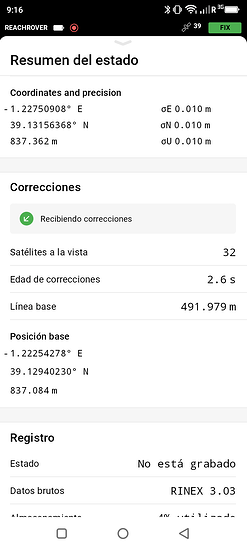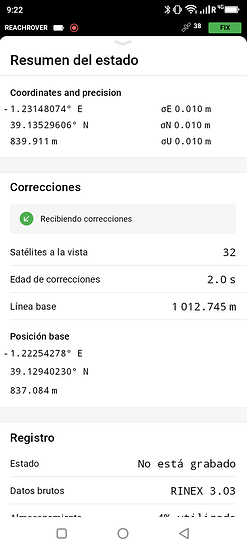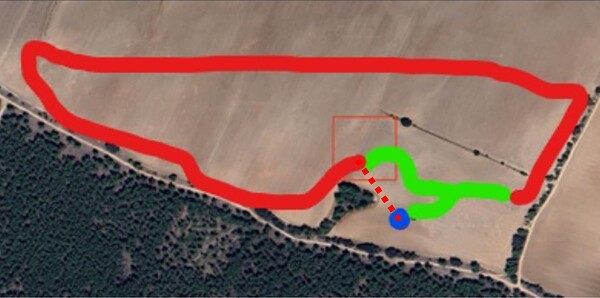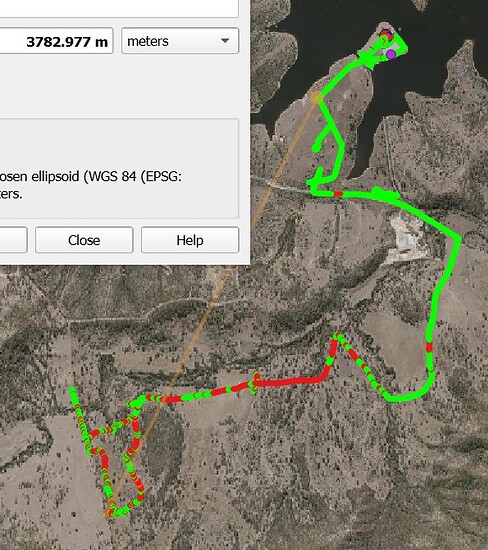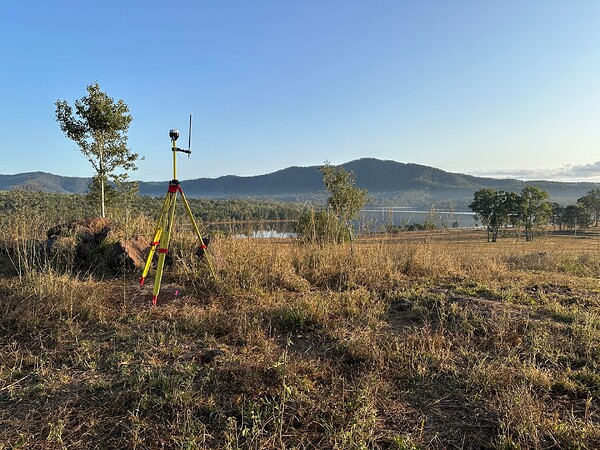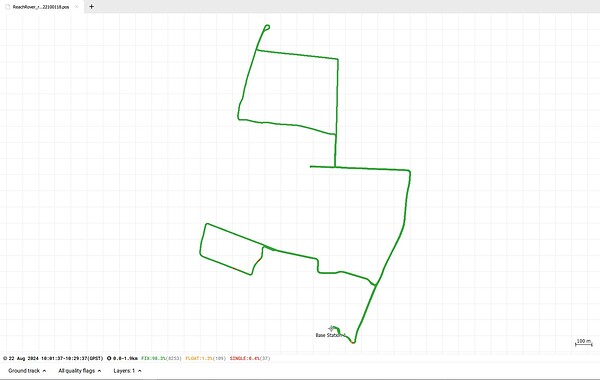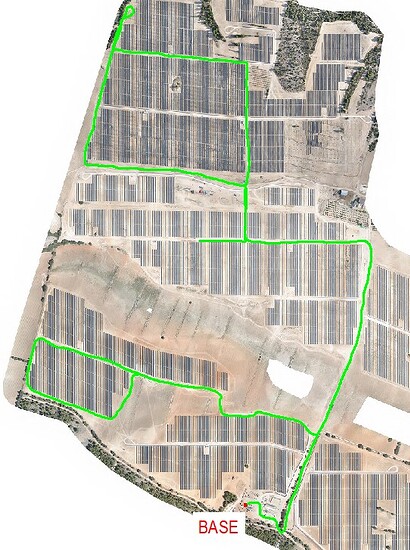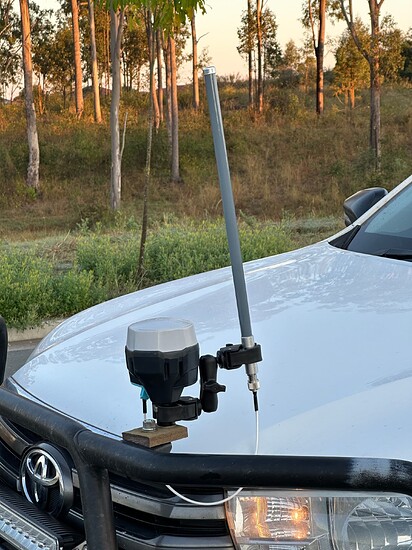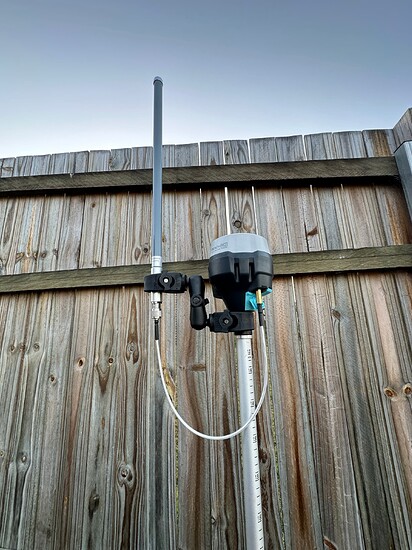Click the header for the full thread. Still using v27 and 3000 to 4000 feet through the woods no problem as long as no hills in between with aftermarket antenna. Some where in here us a thread with google earth pics and distances.
Using v27, did the distance get back to normal using the standard Emlid antennas that came with the units?
Do you still have the v27 firmware file that OP can try?
You mentioned you reverted back to v27 and works now. I see other posts stating they just reflased unit then worked again. But wondering if they reflashed using a more recent or up to date firmware and it worked?
I guess my point is, maybe the fact of just reflashing resolved the issue versus rolling back?
Hello again Victor
I tell you the latest results obtained:
I have downgraded the RS2 version of the firmware to version 29.2 and as a result the Radio Lora once again reaches 2 km with a fixed solution, so I deduce that the fault is in the current firmware version 32.0
I am attaching the logs and reports I have made with version 29.2 to see if you can find the bug and then be able to fix version 32.
For the moment I’m sticking with version 29.2.
with version 32 it did not exceed 200 meters. In blue the position of the base, in green the approximate radius of 200 meters with a fixed solution, and in red without a Radio Lora link
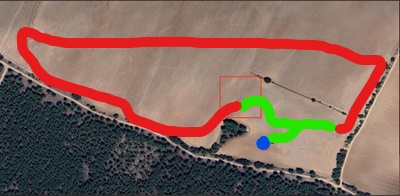
Greetings Mr. Emilio, please do not forget to perform the other tests that I indicated to you via WhatsApp. I am glad that you were able to recover the performance of the LoRa radio.
Good effort.
Looking at your plot there could be more dynamics at play here, but hard to say as the two tests are not apples to apples.
In the shorter “200m” test were you travelling clockwise or anticlockwise? If clockwise, the LoRa disconnection could be coincident with the group of trees you went behind. E.g. red dotted line here:
Your “2km” test is only a line drawn clear of these tree obstructions so the circumstances of your actual path are not clear. Did you follow the same track as the first test and can you post it?
For example it’s possible it may not be a range issue per-se but something else like an inability to subsequently re-establish the connection after it drops. E.g. similar to this recent post re UHF: Corrections via UHF - Reach RS3 / RTK / PPK configuration - Emlid Community Forum
I’m not suggesting it is, but the underlying subsystems are very complex and the more consistent and detailed our tests are the better it will help Emlid to narrow down & fix.
Having recently done this with a LoRA Range Extender on both an RS2 (Base) and RS2+ (Rover), I managed to get just under 4km in some pretty challenging conditions. I definitely did not have line of sight and had pretty dense vegetation between devices.
The colours in this image correspond to Fix (Green), Float (Orange), Single (Red) from the solutions logged on the Rover at the time (so no Post Processing). Most of the ones in Single as I got further away correspond to me either driving (Rover mounted to Bullbar) or walking (Rover mounted to Pole) and not really allowing the device to find a solution. It also probably highlights the viewshed where it is most challenging (with hills and trees in the way) and means reliance on PPK for later if I needed a point in these areas (which I did with residuals then under 10mm).
I am pretty sure I have both devices set to maximum power output and am in a pretty radio quiet zone.
Maybe I got lucky?
Impressive, hadn’t seen definitive results of the extended range kit until now but that says volumes. I had been considering base only but maybe now re-thinking, how much more ponderous does a handheld rover become?
Many thanks for all the help John, I will definitely be testing as soon as possible.
Regards
Hi Wombó
In the image you indicate, the route was counter-clockwise.
And in the test I performed and got a fix at 2 km, I did the same route as in the image, and since the result was successful, even behind the trees, I continued testing with more distance and performed the test throughout the field and as you can see the fixed signal was practically not lost anywhere.
Thanks for confirming, yes that makes it very clear there is a significant difference.
As mentioned before, some users have claimed LoRa long distance worked fine again just after REFLASHING it. I.e. using latest current version, not prior older version.
Just to rule out that if a bug in a current newer version, and since you still have a copy of a prior version to rollback to just in case, maybe REFLASH using the newest version (no-beta) just to see if LoRa distance still works or if in fact it does not?
If it was in fact a bug or whatever, many many users would have this issue.
If just merely REFLASHING solves the issue, I wonder what triggers the long distance LoRa to work again and WHAT caused it to break to begin with?
Hi @topoemilio
We’ve tested all of our releases and haven’t noticed anything suspicious so far. However, we’ll run another round of tests to be sure. As soon as we have any updates, we’ll let you know.
Kindly elaborate on this piece of equipment.
Perhaps provide a link. I have been struggling with LoRa range limitations for way too long.
Thanks in advance
In Australia: Triangl Extended Range Antenna Kit - Shop at Map Gear
Note it’s a passive antenna only solution providing no additional power, the benefits are at one or both ends in the radiation pattern (in this case vertical 35 degrees) and being able to raise the antenna physically higher above obstacles such as clearing vegetation for improved line of sight.
The tradeoffs obviously include being a little more cumbersome but it’s modular in that you can opt for one on the base only to keep the rover free, or another on the rover as well when it makes sense for maximum range.
I bought this kit.
The improvement was not dramatic enough to justify hauling around.
Every now and again if i know I’ll be working in particularly dense foliage I’ll include it in the base.
I’d say it improves the range (using antenna on the base only) by 5-10%
It’s too clumsy to attach to my rover.
I’m looking into a lora amplifier or a small uhf radio to supplement the lora radios.
I honestly don’t think it does.
It doesn’t really weigh that much more and I still sling it over my shoulder as I go along. I probably walked about 2km all up in thick bush and it did not bother me. I do tie (velcro or ladder strap) the cable to the Pole so that if it gets snagged it doesn’t damage the connector.
Maybe the photos help?
It is the same as the one linked by Wombo.
Thanks.
I am actually considering going the way of the UHF radio and an RS3
Meanwhile I have to justify the additional cost & bulk of this vs simply switching brands that would cost way more (considering CHC Nav or South) but would deliver greater reassurance and reliability.
I’ve gotten tired of spending sometimes up to 2 hours fiddling with settings trying to get my receivers talking before being productive in the field.
Emlid has afforded me a wonderful transition into RTK GNSS I know there is no turning back for me now. However, it’s down to economics in my decision moving forward.




